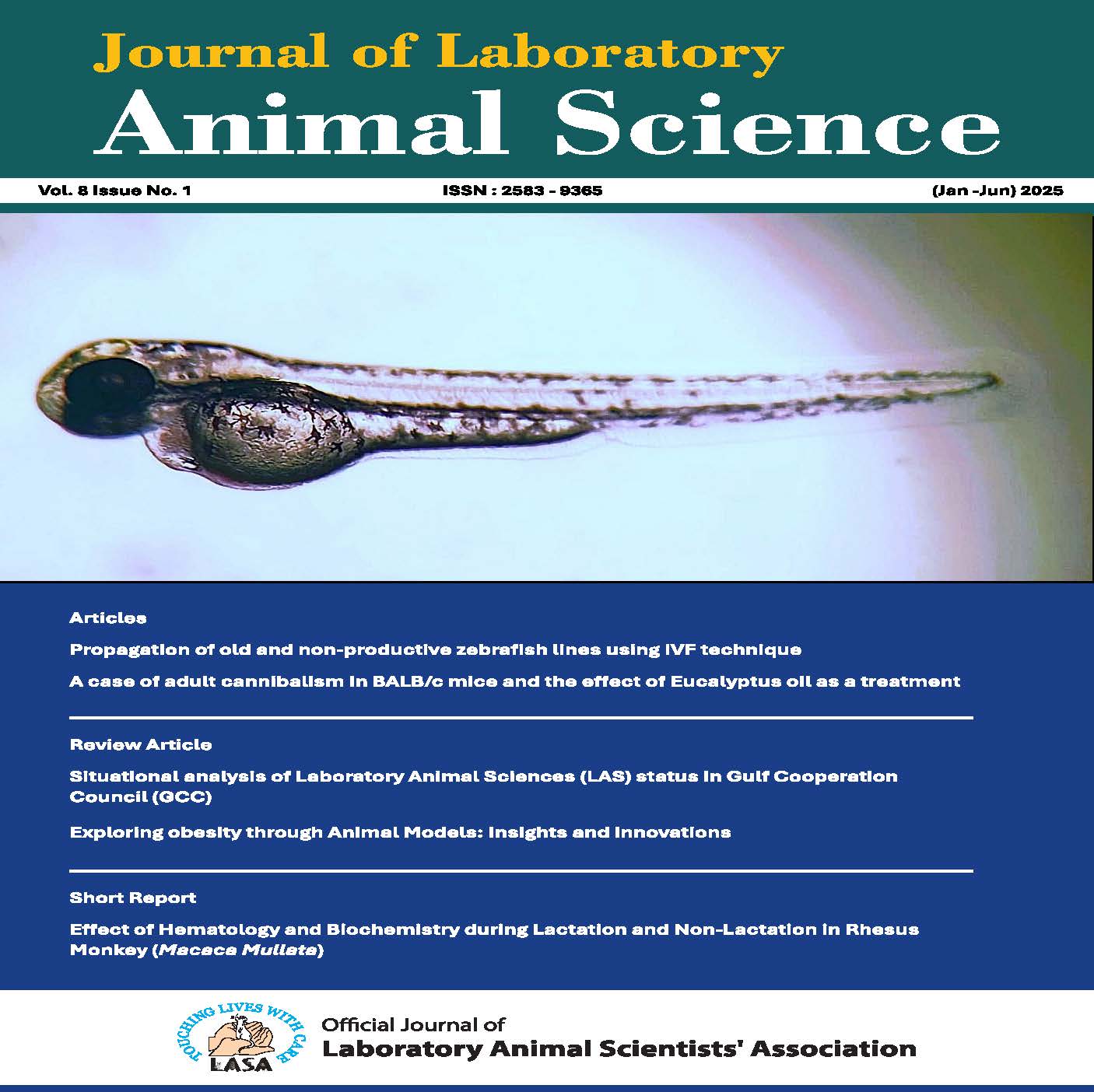Post Approval Monitoring of Research Protocols: A Review on Experimental Animals Perspective
DOI:
https://doi.org/10.48165/jlas.2022.5.1.2Keywords:
Post Approval Monitoring, Animal welfare, Research protocol, Institutional animal ethics committee, Regulatory complianceAbstract
Post approval monitoring (PAM) is an internal process for the ongoing research activities of approved protocols adopted by the institution. The primary goals are to ensure research methodology is conducted in accordance with the approval, evaluation of animal manipulations to reduce pain and distress, assessment of surgical procedures and post-operative care, to provide timely feedback to refine procedures and understand the proficiency of individuals on specific techniques of the species involved in experiments. The best approach should be collegial and facilitative of informed observations that provide an oversight of experiments conducted by principal investigators (PI’s) along with other researchers listed in the protocol. In general, institutions can efficiently monitor this PAM process through any researcher/veterinarian/ coordinator who have considerable research experience as well as involved in the protocol review process or may be part of ethical committee for effective oversight of the animal care program. The proactive approach is fostering scientific conversation with research personnel and builds relationship by adhering institutional policies on animal research which in turn creates a positive culture of compliance throughout the institution. Collectively, PAM observation is ensuring the quality, research integrity, compliance with regulations and well-being of animals that eventually provides an opportunity for identifying educational competency, training based on observation categories and enabling the systematic communication process between animal care technicians, veterinarians, investigators, ethics committee and management for better compliance and humane care and use of animals for research.
Downloads
References
1. Banks RE, Norton JN (2008). A sample post approval monitoring program in academia. ILAR J. 49 (4):402-18. 2. Collins JG (2008). Post approval monitoring and the IACUC. ILAR J. 49(4): 388-392.
3. CPCSEA (2010). Standard Operating Procedures for IAEC by Committee for the Purpose of Control and Supervision of Experiments on Animals, Govt of India.1-141.
4. Dale WE (2008). Post approval Monitoring and the Role of the Compliance Office. ILAR J. 49 (4): 393-401. 5. DeHaven WR (2002). Best practices for animal care
committees and animal use oversight. ILAR J. 43 S59- 62.
6. Ingle A (2015). CPCSEA Inspections: Can it be done the AAALAC way?. Journal of Laboratory Animal Science. 3(1):31-34.
7. Klein HJ, Bayne KA (2007). Establishing a culture of care, conscience, and responsibility: Addressing the improvement of scientific discovery and animal welfare through science-based performance standards. ILAR J.
48:3-11.
8. NRC (2011). Guide for the care and use of laboratory animals, The National Academies Press, Washington DC, Eighth edition, 1-222.
9. Silk SB, Hampton LL, Brown PA (2013). What investigators need to know about the use of animals. ILAR J. 54 (3): 324-328.
10. Silverman J, Macy J, Preisig PA (2017). The role of the IACUC in ensuring research reproducibility. Lab Anim. 46(4): 129-135.
11. Vanderford DA, Doss S, Banks RE (2015). A retrospective review of post approval monitoring at a large academic institution. Lab Anim. 44(10):395-401

